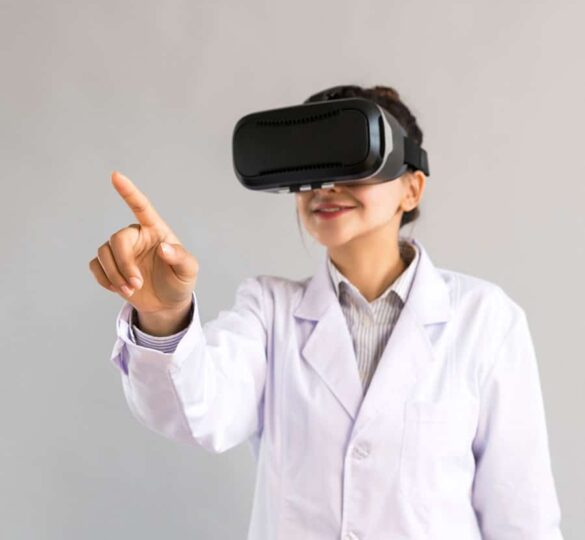The Future of Virtual Reality Visual Field Testing
The future of Virtual Reality-based visual field testing is bright.

Virtual Reality (VR) visual field tests may soon become an important assessment tool in glaucoma management.
Visual field testing is a very important part of your glaucoma care, yet it can be a tedious and challenging test to take. Indeed, many of my patients groan when I tell them that our next visit will include visual field testing.
Given the COVID-19 pandemic and challenges with visiting your ophthalmologist, there is an even greater desire for a mobile visual field test that can be taken at home.
Virtual reality (VR)-based visual field testing may make this goal possible, and even once the pandemic is over, it may help change the experience of visual field assessment for glaucoma patients in the future.
Traditional vs. Virtual
Traditional visual field tests require a large, bulky, expensive piece of equipment, a trained technician, and a dark room. On the other hand, a VR-based visual field test overcomes a lot of these problems. The equipment typically consists of a small, mobile, head-mounted display such as VR goggles or headsets, some of which are already commercially available and can be purchased off-the-shelf. Despite costing several hundred dollars, these VR headsets are much less expensive than the visual field equipment in your ophthalmologist’s office.
Once you undergo successful training in the use of a VR headset, a technician’s help is no longer needed. Indeed, you can take the test at home. In my clinic, we have successfully trained patients over video calls to take a VR-based visual field test at home, thereby bypassing the need of my patients to come to clinic for their testing. And, because the test is taken in a virtual reality environment, you do not need to take the test in a dark room. Furthermore, most VR visual field tests being developed allow testing of both eyes simultaneously, which permits a more comfortable testing experience for the patient.
Hurdles to Cross
However, to date there are no VR visual field tests that are considered the “standard of care,” meaning that clinician-scientists are still conducting studies to demonstrate evidence that VR visual field tests can be used to diagnose and monitor glaucoma. This is an important hurdle to cross; however, I am very optimistic that, in the future, VR visual field tests will become an important assessment tool and will have many applications, including testing in remote locations, testing bedridden patients, and home testing.
Article by Yvonne Ou, MD. Posted on September 2, 2020 — Last reviewed on March 7, 2022.

Yvonne Ou, MD
Yvonne Ou, MD is a glaucoma specialist and Associate Professor of Ophthalmology, Vice Chair for Postgraduate Education, and Academic Director of the Glaucoma Division in the Department of Ophthalmology at the University of California, San Francisco (UCSF). The research interests of the Ou laboratory are in the area of neurodegeneration and neuronal plasticity in glaucoma, with an eye for improving diagnostic and treatment modalities for patients, including virtual-reality visual field tests.